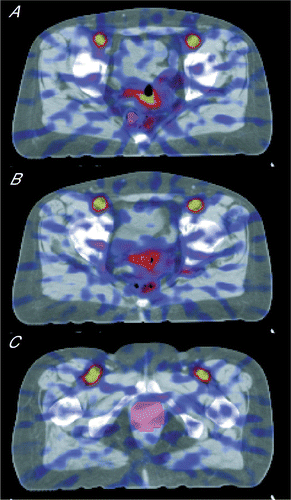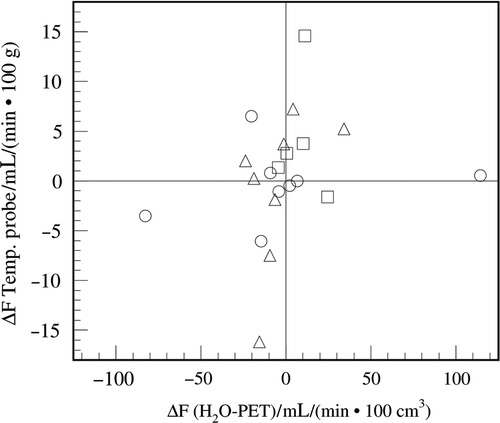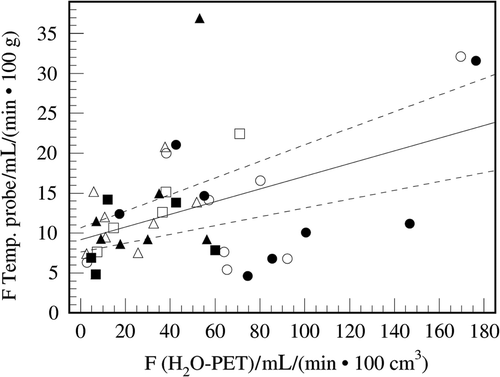Figures & data
Figure 1. 3D CT scan with superimposed fused perfusion-weighted PET image shows the ROI used to estimated positions of the rectal catheter (A), vaginal catheter (B), and tumour (C).

Figure 2. Comparison of the differences (post, pre) of the perfusion values determined by using the temperature probe and those determined using H215O-PET at the position of the temperature probe. ▵: rectal perfusion difference patients with cancer of the uterine cervix, □: rectal perfusion difference in patients with rectal cancer, ◯: cervical perfusion in patients with cancer of the uterine cervix.

Table I. Perfusion was assessed using the temperature probe, PET using a VOI at the location of the temperature probe, and PET using a VOI at the tumour. Mean perfusion values measured at the beginning of heating/before RHT (pre) and end of heating/after RHT (post) are provided. Additionally, the difference (diff.) between both measurements and the average (mean) of both measurements are provided. Cervical perfusion was determined in patients with cervical cancer and rectal perfusion in patients with rectal cancer and cervical cancer.
Figure 3. Comparison of the perfusion values determined by using the temperature probe and those determined using H215O-PET at the position of the temperature probe. The filled line represents the result of linear regression and the broken line the fit error as standard deviation. Filled symbols (▴, •, ![]()


